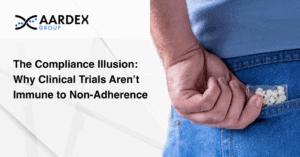If enacted, the US’ Right Drug Dose Now Act will place pharmacogenomics on the main stage of drug development and move us further into the personalized medicine era.
By supporting the use of pharmacogenetic testing to prevent adverse events (AEs) and inform the use of therapies that are tailored to a patient’s genetic makeup, it could open up a world of opportunities – but without a true picture of adherence, we are still missing an integral element of this complex equation.
What is pharmacogenomics?
The act, which would update the National Action Plan for Adverse Drug Events, is currently making its way through the House of Representatives and places heavy emphasis on the field of pharmacogenomics.
The concept is based on the fact that the way a person responds to a drug depends on how their metabolizing enzymes are encoded and produced, and that this varies significantly. In short, two people can take the same drug at the same dose but have two very different reactions by virtue of their genetic make-up.
Its driving factors are the biochemical interactions between the body’s natural processes and the chemical composition of a pharmaceutical drug – namely pharmacokinetics (PK), which describes a drug’s absorption, distribution, metabolism, and excretion, and pharmacodynamics (PD), which relates to how biological processes in the body respond to or are impacted by, the drug in question.
Much of the information needed to make PD and PK calculation is collected during phase II clinical trials when participants are carefully monitored to ascertain their reaction to the investigational product. Researchers analyze safety and efficacy against variables such as age, race, and ethnicity, then use that data to pinpoint the genetic factors that impact medication effect.
This process determines the dose at which the investigational product will, if successful, move into large-scale trials, and then into the market. Getting it wrong can lead to the failure of late-stage studies or unexpected AEs, or necessitate dose adjustment during phase III or even post-marketing, all of which raises safety concerns and increases costs.
What’s more, the growing role of pharmacogenomics means all this information will form the basis for a new type of personalized medicine that could revolutionize healthcare. Getting it right, then, has never been more important.
Adherence in PK and PD calculations
PK and PD calculations are an essential part of the pharmacogenomics equation. But nothing impacts a person’s drug response more than how they take it. If they are missing doses, taking it erratically, or taking too much, for example, researchers will be working with compromised information.
Medication adherence data, then, is the foundation of accurate PK, PD, and pharmacogenomic equations during phase II studies. Yet poor adherence during clinical trials is a well-documented problem, with as many as 50% of patients across all trial phases admitting to not following the dosing protocol.1
The problem has gone unsolved due, at least in part, to a lack of workable solutions. Traditional methods, such as pill counts, blood sampling, and HCP or self-reporting, are just not sensitive enough to provide real value.
Counting returned tablets, for example, provides but a summary of adherence between site visits, rather than the overall understanding of dosing patterns needed to inform pharmacogenomics decisions. In addition, it is subjective and easily censored by participants.
In the monitoring drug or drug metabolites in blood, urine, or hair, “white coat adherence”, or people only taking the investigational product the day before their site visit, is a concern. Self-, site- or HCP-report, meanwhile, are all vulnerable to inaccuracies and bias that can generate incomplete or inaccurate data.
Connect to the full equation
Digital monitoring, which utilizes connected drug packaging and powerful data analytics, is objective, precise, and collects data in near real-time. As such, it provides an accurate, holistic view of medication-taking behaviour upon which to base the PK and PD calculations that inform pharmacogenomics.
Microcirculatory in the connected packaging records dose administration and other essential information and automatically transmits it to the study team. A cloud-based platform then uses sophisticated algorithms to analyze medication-taking behaviour, and flag any erratic dosing patterns.
This advanced approach is feasible, reliable, and easy to implement, and, crucially, it is evidence-based. In fact, studies have shown, for example, that it is 97% accurate, compared to 60% for a pill count, 50% for healthcare professional rating, and just 27% for self-report.2
By providing an overall, real-time picture of drug-taking behaviour, this fresh approach gives researchers all the information they need to make informed, accurate PK and PD calculations – and embrace the future of pharmacogenomics-driven personalized medicine.
References
- Hwang, T. J., Carpenter, D., Lauffenburger, J. C., Wang, B., Franklin, J. M., & Kesselheim, A. S. (2016). Failure of investigational drugs in late-stage clinical development and publication of trial results. JAMA internal medicine, 176(12), 1826-1833.
- Alili, M., Vrijens, B., et al. A scoping review of studies comparing the medication event monitoring system (MEMS) with alternative methods for measuring medication adherence. (2016). https://pubmed.ncbi.nlm.nih.gov/27005306/



